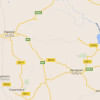No university project should endanger Chalan Beel

With the permanent campus project of Rabindra University in Sirajganj set to be placed for approval at this week's Executive Committee of the National Economic Council (Ecnec) meeting, environmentalists have voiced concerns over the proposed site at Chalan Beel, which spans 1,000 square kilometres across 41 upazilas in six districts. They warn that constructing the campus there will damage the beel's aquatic ecosystem and obstruct natural water flow, potentially increasing waterlogging and flooding in surrounding areas. The Chalan Beel Rokkha Andolon has already urged the planning ministry to relocate the proposed site from Buripothajia in Shahjadpur. However, university teachers and students claim that these concerns are "unfounded", arguing that the chosen site lies far off the centre of the beel. The question is: did the authorities conduct any environmental impact assessment before selecting the site?
Rabindra University was established in 2016 while classes began in April 2018. For the past seven years, however, academic and administrative activities have been conducted in eight rented buildings scattered across Shahjadpur municipality. To meet students' long-standing demand for a permanent campus with improved facilities, 100 acres of land were designated for the university in a part of Chalan Beel at Buripothajia, about 11 kilometres from Shahjadpur town. Over the past week, students staged several road blockades pushing for the project's approval.
The proposed site remains submerged under water for four months of the year. To build the campus, the area will need to be filled to a height of 9 to 14 metres. Additionally, a road and bridge will be required for access to the campus, along with an embankment. Already, the filling of four acres of the designated 100 acres has begun obstructing the Baral River's water flow. If the remaining 96 acres are filled, environmentalists claim, water flow in Chalan Beel and Baral River will be severely affected during monsoon while the biodiversity will also suffer.
However, according to a government report, the proposed site remains submerged under water for four months of the year. To build the campus, the area will need to be filled to a height of 9 to 14 metres. Additionally, a road and bridge will be required for access to the campus, along with an embankment. Already, the filling of four acres of the designated 100 acres has begun obstructing the Baral River's water flow. If the remaining 96 acres are filled, environmentalists claim, water flow in Chalan Beel and Baral River will be severely affected during monsoon while the biodiversity will also suffer. The VC of Rabindra University, however, claims that the proposed site is not classified as beel land, and that the Department of Environment cleared it back in 2019.
These contradictory statements from university authorities and environmentalists create confusion about the actual situation on the ground. We, therefore, urge the government to conduct a proper environmental impact assessment before approving the project. If needed, the campus can be built elsewhere, such as in the Sirajganj Economic Zone, as many have suggested. While Rabindra University definitely needs a permanent campus, it must not be built at the cost of damaging the environmentally crucial Chalan Beel.


 For all latest news, follow The Daily Star's Google News channel.
For all latest news, follow The Daily Star's Google News channel. 









Comments